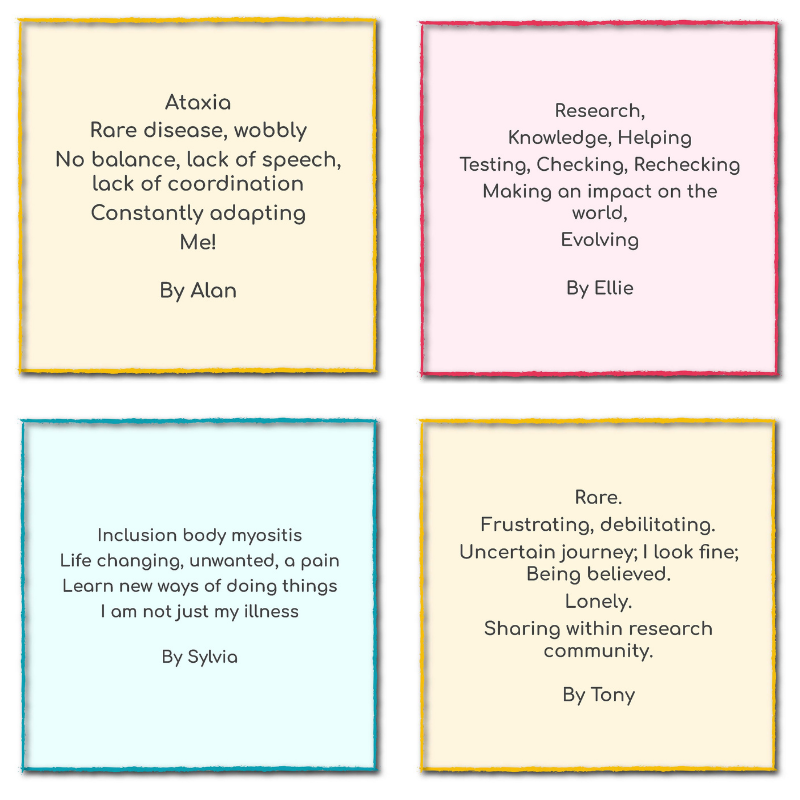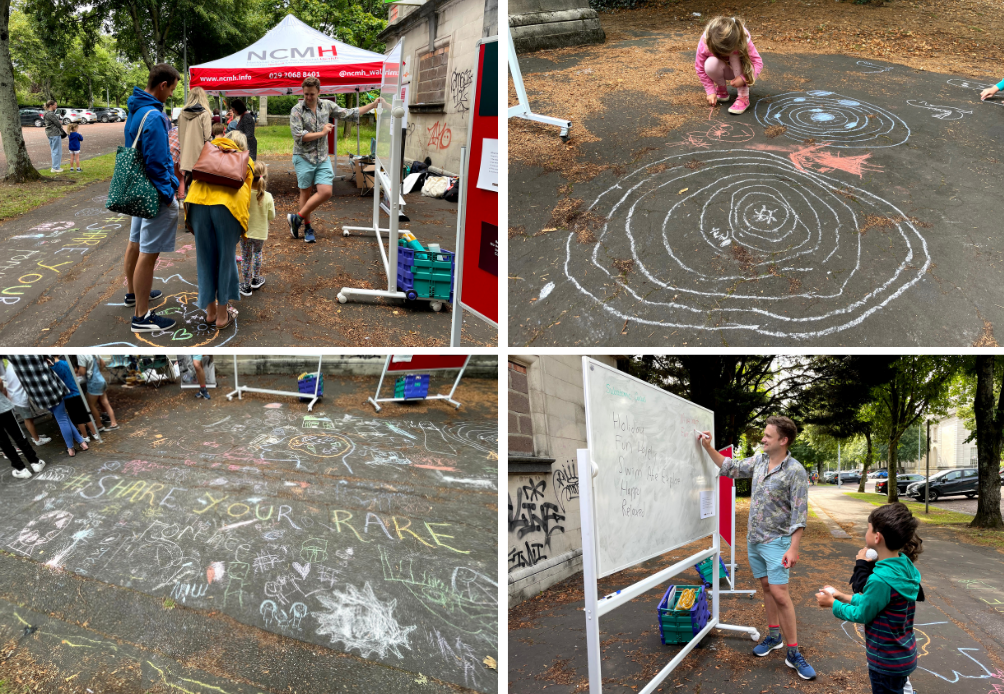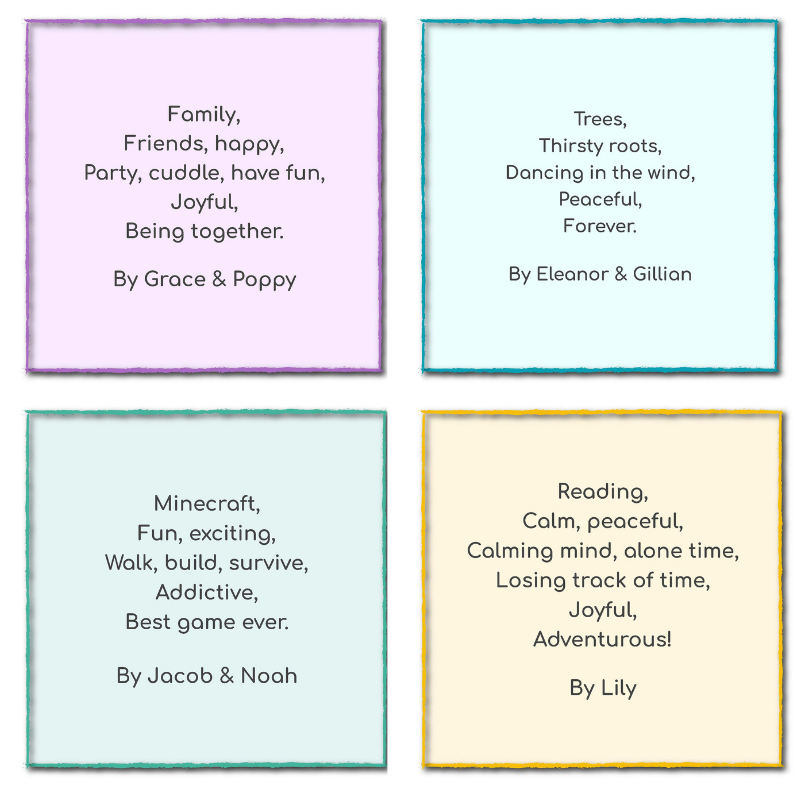Share Your Rare
A collaboration between scientists and artists hopes to raise awareness of the experiences of people affected by rare genetic conditions.
Dr Sam Chawner from Cardiff University teamed up with Phenotypica, an art and science initiative by scientist Ben Murray and artist Neus Torres Tamarit.
Sam’s research aims to understand the link between rare genetic conditions and mental health problems. Through Phenotypica, Ben and Neus create immersive artworks that play with and illuminate the mechanisms of genetics and evolution.
Funded by the Wellcome Trust ISSF3 Award, their project, Share Your Rare, covered themes such as mental health in genetic conditions, and the experiences of people with genetic conditions during the COVID-19 pandemic.
Share your story
Through online workshops with people and families with lived experiences of rare genetic conditions the team used a story-telling technique to help attendees write a short poem about their experiences.
The technique used by the team was the cinquain poem, a five-line poem that is built by answering five questions:
- What is the subject of my poem?
- Can you think of two words or phrases that describe it?
- Can you think of three action words or phrases that describe it?
- How do I feel about the subject?
- What is another word for my subject or a conclusion of my subject?
Neus Torres Tamarit from Phenotypica explained the choice of technique, “We wanted a form of communication that levelled the playing field between people who have and live with rare genetic conditions and people who study and treat them. As very few people write poetry on a regular basis, we thought of poetry as an ideal mechanism.
The beauty of the Cinquain poem is that it also lends itself to “braiding”, in which the lines from a number of poems can be woven together to make new poems.
“This helped us to take peoples’ individual perspectives and weave them together into shared experiences and also serves as an analogy for the genetic process of recombination.”
We’re pleased to share cinquain the poems written by the rare genetic condition community. Poetry workshops were run with advocacy group Genetic Alliance, the IMAGINE-ID research team, and poems were also submitted online.
If you would like to write your own poem here are some extra instructions.

Art meets science
This video artwork developed by Phenoptypica, integrates all the poems of the lived experience of workshop participants with human genetic code, with a journey through woodland, a metaphor for genetics but also the journey individuals with rare conditions face.
Ben Murray from Phenotypica explained, “The video is inspired by the variety and diversity of experiences within the rare disease community. It is also a scientific metaphor for the variability in medical symptoms seen in rare genetic conditions. For example, 22q11.2 Deletion Syndrome (22q) also known as Velo-Cardio-Facial Syndrome (VCFS) and DiGeorge Syndrome is a rare genetic condition where one of the two copies of chromosome 22 has a section of DNA deleted.
“Although many people have the 22q deletion in some form, the high variability and its interaction with genes of the other chromosome 22 mean that each person’s experience of having this is different.”
The video artwork starts with a protein sequence belonging to the 22q region appearing on the screen that gradually disappears, giving place to a Cinquain poem.
This poem is a recombination of all the poems about rare genetic conditions that we have collected from the project participants.
The poem words become a stencil of what resembles a nature scene, to reveal a landscape shortly afterwards. Moreover, different videos of nature start overlapping and creating a complex scene with layers of images and audio.
Ben explained further, “Whilst doing research for Share Your Rare and creating the artwork, and as we were working with poems and words, I read several papers about metaphors that doctors often use with patients and the positive or negative impact that these have on them.
“I read a more neutral metaphor about genetics and epigenetics being nature’s pen and pencil set, and somehow these reminded me of the videos I recorded during the lockdown period in 2020 and 2021 at the local woods.
“I would go out to take a break from the confinement, and I would look up: I’d see the layers and layers of branches and leaves and I would think about this as a visual metaphor for the complexity of so many things interacting with each other in genetics and epigenetics.”
Share Your Rare at the Subatomic Circus

Children and families also got creative and wrote poems about their summer experience:

Get involved
If you’d like to try the techniques used by the Share Your Rare project you can have a go using the following instructions:
Read more
August 2021: Share Your Rare at the Subatomic Circus
November 2020: Creative Complexity team speak at the Knowledge Transfer Partnership meeting with the charity Cerebra
